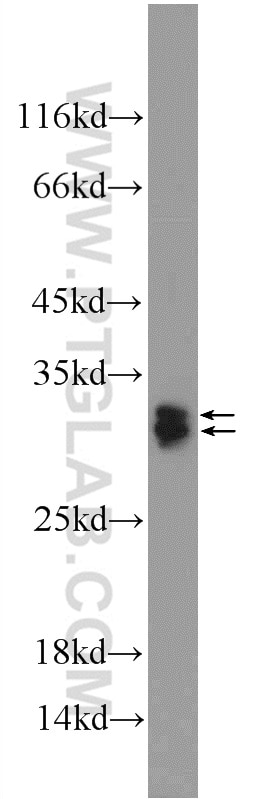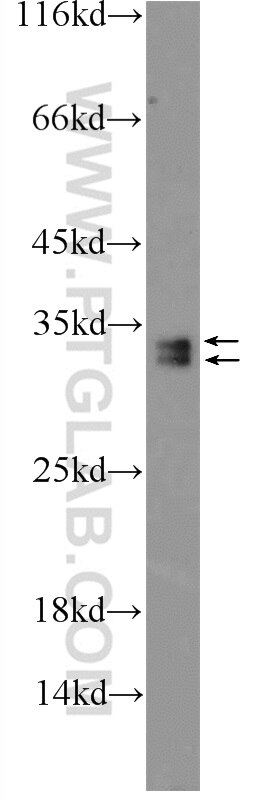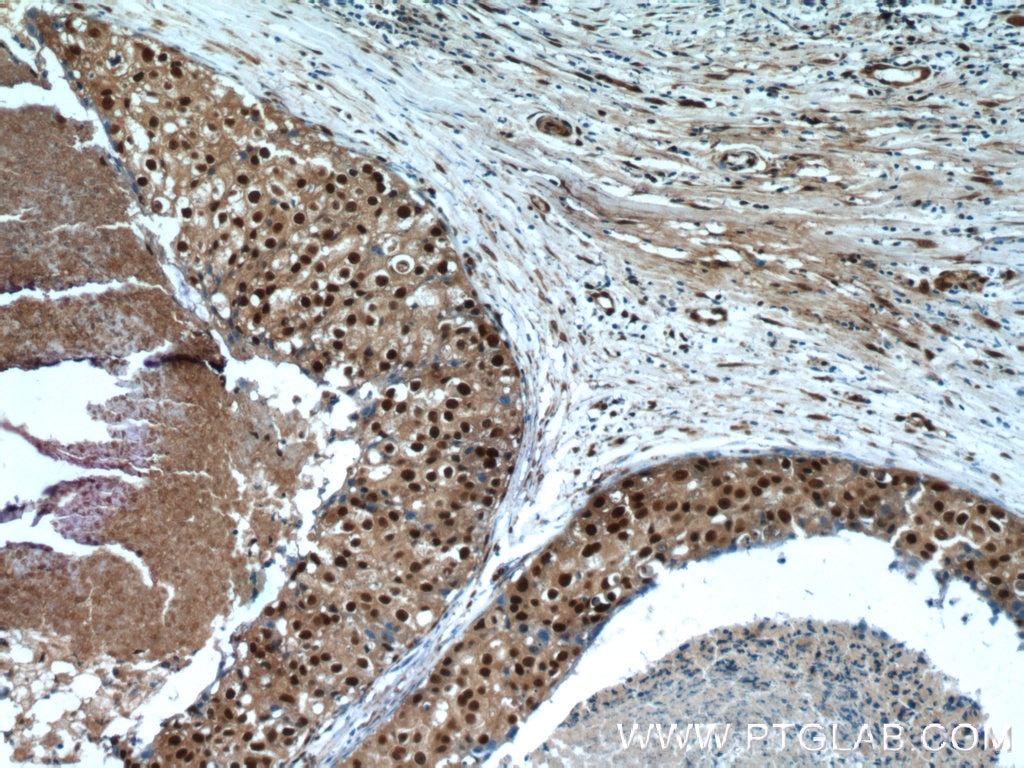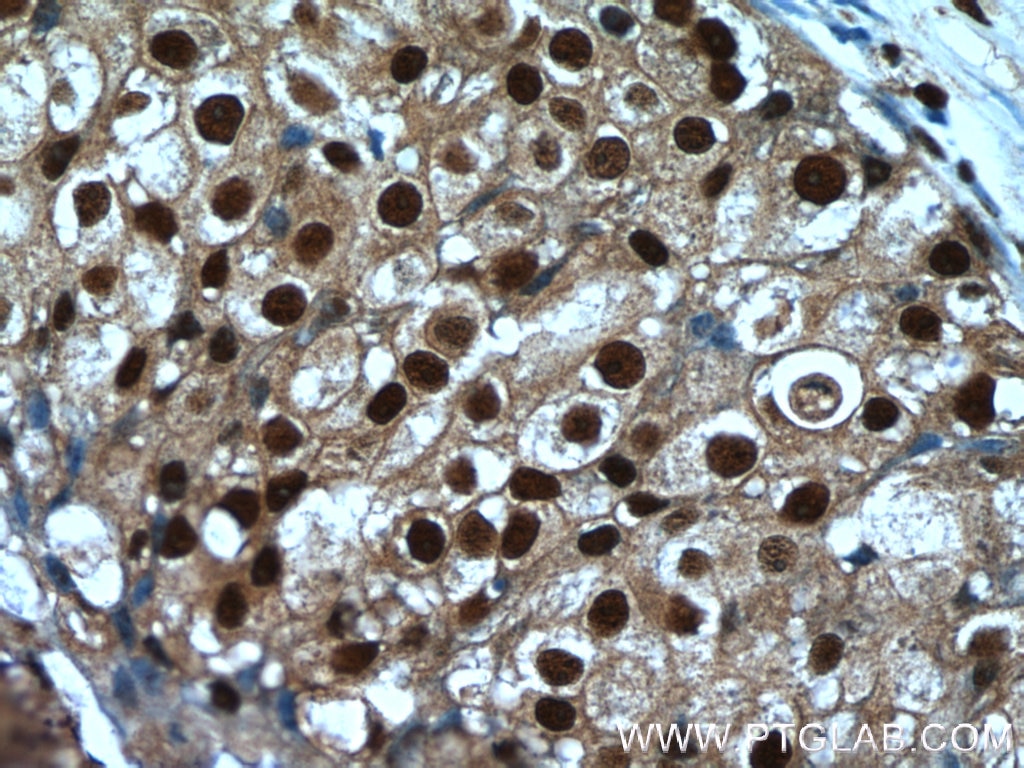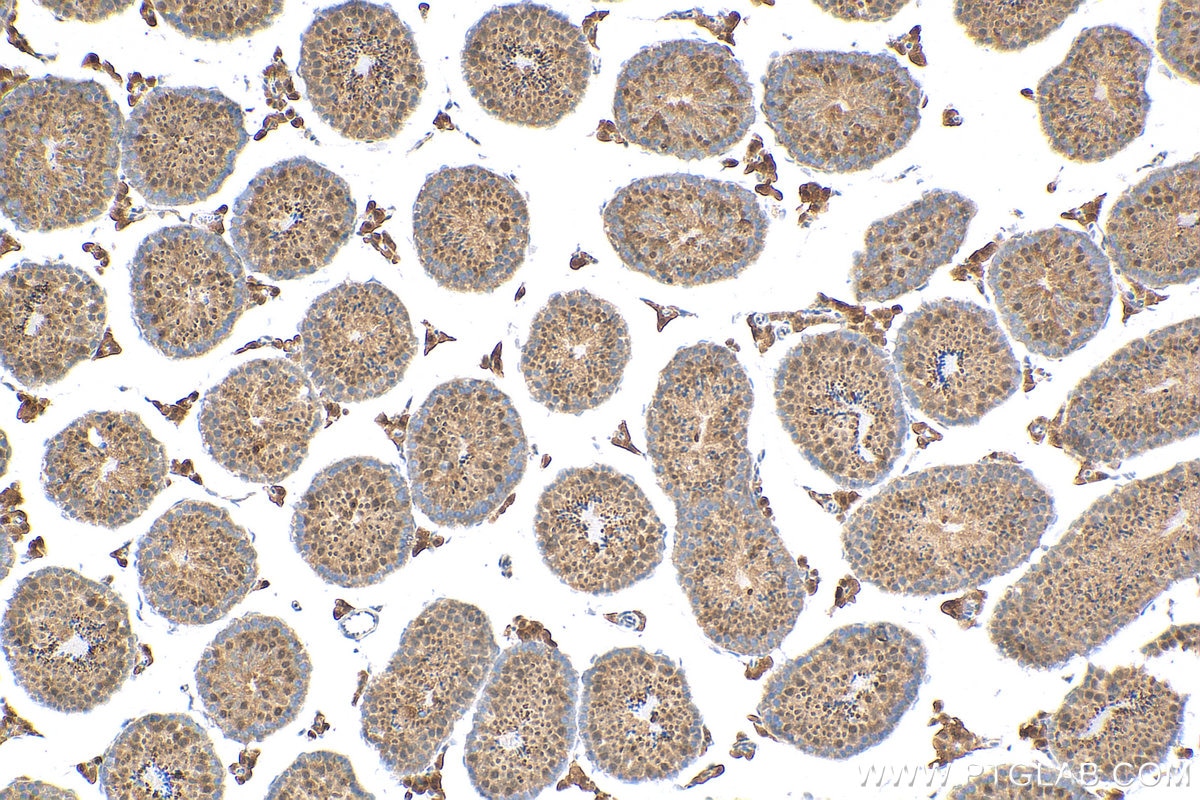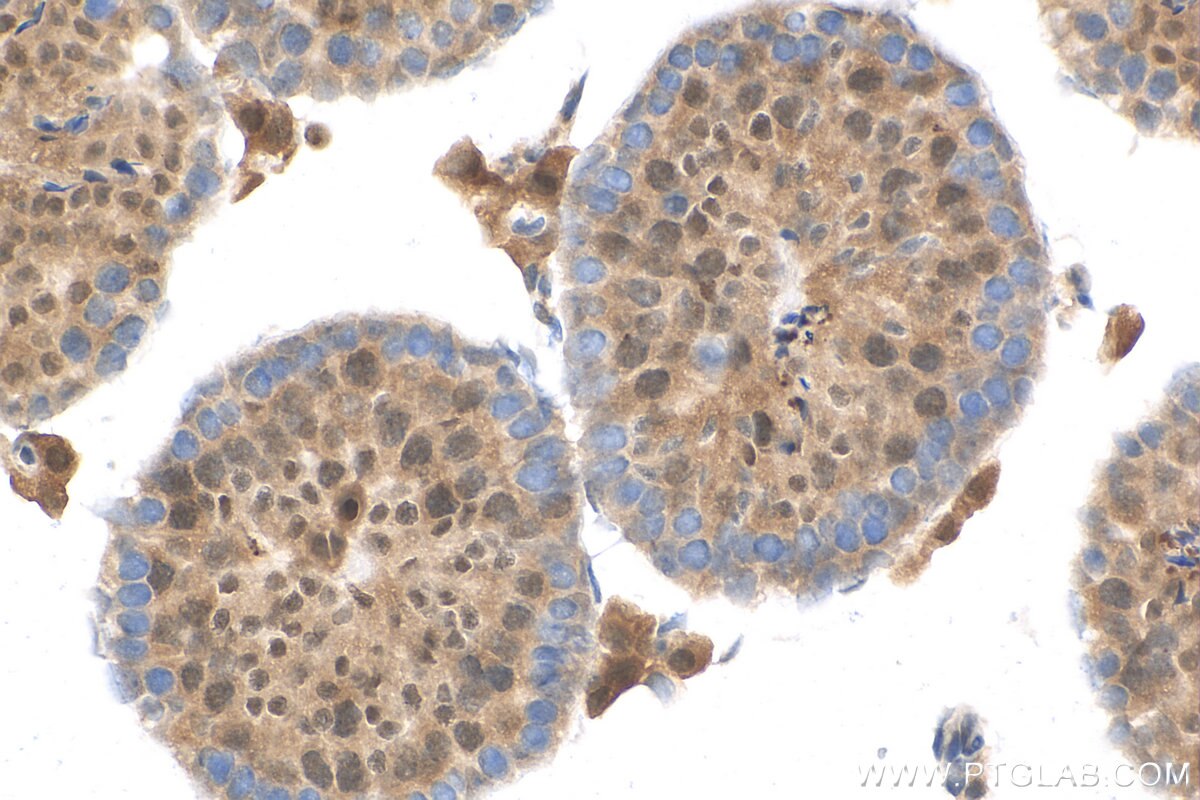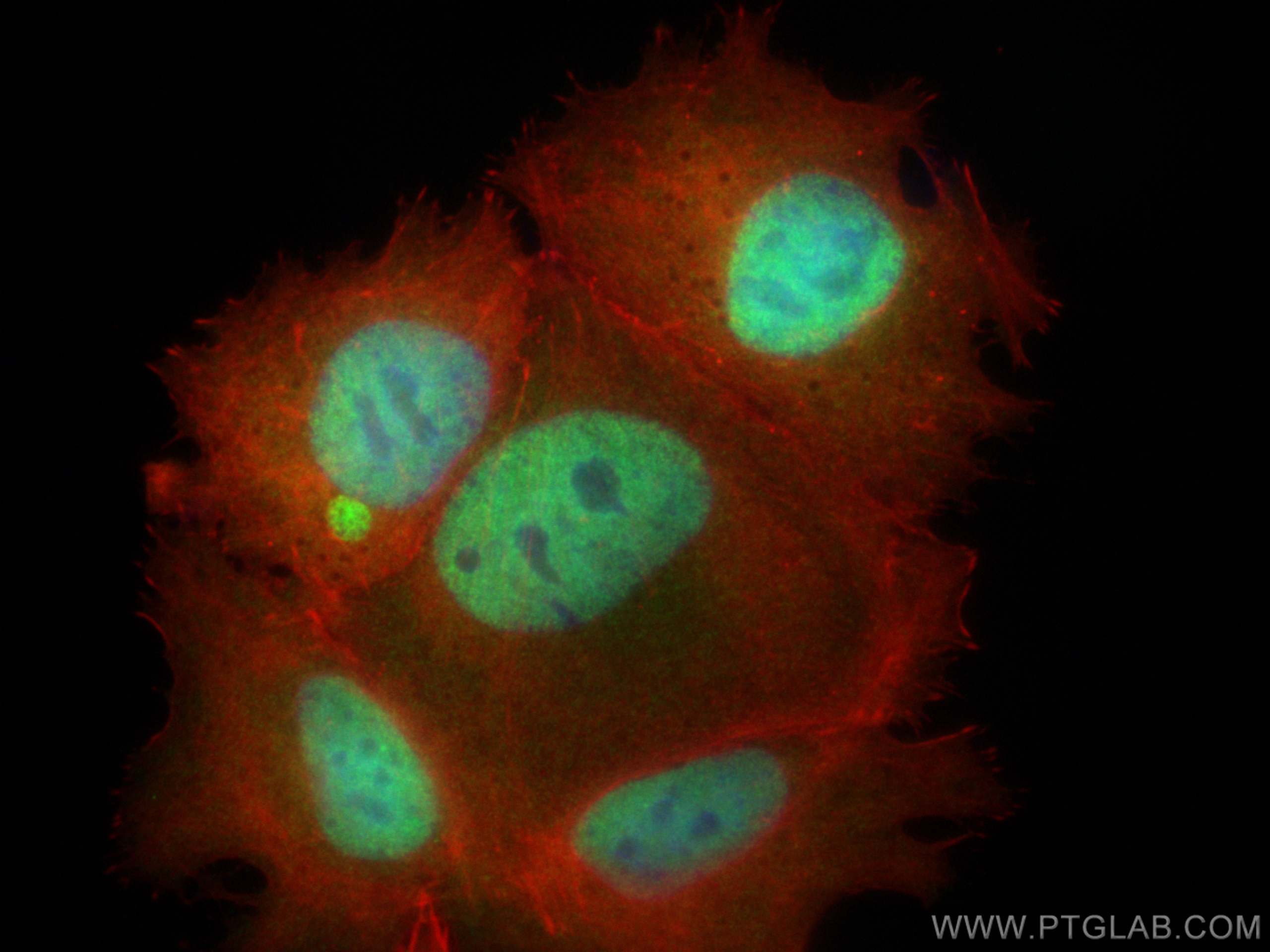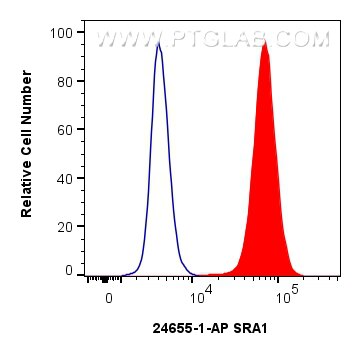SRA1 Polyklonaler Antikörper
SRA1 Polyklonal Antikörper für WB, IHC, IF/ICC, ELISA
Wirt / Isotyp
Kaninchen / IgG
Getestete Reaktivität
human, Maus
Anwendung
WB, IHC, IF/ICC, ELISA
Konjugation
Unkonjugiert
Kat-Nr. : 24655-1-AP
Synonyme
Geprüfte Anwendungen
| Erfolgreiche Detektion in WB | A2780-Zellen, HEK-293-Zellen |
| Erfolgreiche Detektion in IHC | humanes Mammakarzinomgewebe, Maushodengewebe Hinweis: Antigendemaskierung mit TE-Puffer pH 9,0 empfohlen. (*) Wahlweise kann die Antigendemaskierung auch mit Citratpuffer pH 6,0 erfolgen. |
| Erfolgreiche Detektion in IF/ICC | MCF-7-Zellen |
| Erfolgreiche Detektion in FC (Intra) | MCF-7-Zellen |
Empfohlene Verdünnung
| Anwendung | Verdünnung |
|---|---|
| Western Blot (WB) | WB : 1:2000-1:10000 |
| Immunhistochemie (IHC) | IHC : 1:20-1:200 |
| Immunfluoreszenz (IF)/ICC | IF/ICC : 1:200-1:800 |
| Durchflusszytometrie (FC) (INTRA) | FC (INTRA) : 0.80 ug per 10^6 cells in a 100 µl suspension |
| It is recommended that this reagent should be titrated in each testing system to obtain optimal results. | |
| Sample-dependent, check data in validation data gallery | |
Veröffentlichte Anwendungen
| WB | See 9 publications below |
| IHC | See 1 publications below |
Produktinformation
24655-1-AP bindet in WB, IHC, IF/ICC, ELISA SRA1 und zeigt Reaktivität mit human, Maus
| Getestete Reaktivität | human, Maus |
| In Publikationen genannte Reaktivität | human, Maus |
| Wirt / Isotyp | Kaninchen / IgG |
| Klonalität | Polyklonal |
| Typ | Antikörper |
| Immunogen | SRA1 fusion protein Ag20082 |
| Vollständiger Name | steroid receptor RNA activator 1 |
| Berechnetes Molekulargewicht | 26 kDa |
| Beobachtetes Molekulargewicht | 30 kDa, 33 kDa |
| GenBank-Zugangsnummer | BC067895 |
| Gene symbol | SRA1 |
| Gene ID (NCBI) | 10011 |
| Konjugation | Unkonjugiert |
| Form | Liquid |
| Reinigungsmethode | Antigen-Affinitätsreinigung |
| Lagerungspuffer | PBS with 0.02% sodium azide and 50% glycerol |
| Lagerungsbedingungen | Bei -20°C lagern. Nach dem Versand ein Jahr lang stabil Aliquotieren ist bei -20oC Lagerung nicht notwendig. 20ul Größen enthalten 0,1% BSA. |
Hintergrundinformationen
Steroid receptor RNA activator 1 (SRA1), also known as seroid receptor RNA activator protein (SRAP) or SRA, is involved in modulating the activity of multiple transcription factors including the estrogen receptor (ER) (PMID: 20398657). It may play a role in tumorigenesis (PMID: 16152589). The SRA1 gene encodes both SRA1 protein and a non-coding functional RNA that functions as part of a ribonucleoprotein complex activating steroid receptor induced transcription. This polyclonal antibody recognizes endogenous SRA1 isoforms which migrate as a doublet on SDS-PAGE gels (PMID: 12565891; 23907597).
Protokolle
| PRODUKTSPEZIFISCHE PROTOKOLLE | |
|---|---|
| WB protocol for SRA1 antibody 24655-1-AP | Protokoll herunterladen |
| IHC protocol for SRA1 antibody 24655-1-AP | Protokoll herunterladenl |
| IF protocol for SRA1 antibody 24655-1-AP | Protokoll herunterladen |
| STANDARD-PROTOKOLLE | |
|---|---|
| Klicken Sie hier, um unsere Standardprotokolle anzuzeigen |
Publikationen
| Species | Application | Title |
|---|---|---|
Adv Sci (Weinh) Pyruvate Carboxylase in Macrophages Aggravates Atherosclerosis by Regulating Metabolism Reprogramming to Promote Inflammatory Responses Through the Hypoxia-Inducible Factor-1 Signaling Pathway | ||
Free Radic Biol Med Up-regulation of thioredoxin system by puerarin inhibits lipid uptake in macrophages | ||
Phytomedicine Rice bran active peptide (RBAP) inhibited macrophage differentiation to foam cell and atherosclerosis in mice via regulating cholesterol efflux | ||
Arterioscler Thromb Vasc Biol RP5-833A20.1/miR-382-5p/NFIA-Dependent Signal Transduction Pathway Contributes to the Regulation of Cholesterol Homeostasis and Inflammatory Reaction. | ||
J Lipid Res A lincRNA-DYNLRB2-2/GPR119/GLP-1R/ABCA1-dependent Signal Transduction Pathway Is Essential for the Regulation of Cholesterol Homeostasis and Inflammatory Reactions. | ||
J Lipid Res VNN1 Promotes Atherosclerosis Progression in apoE Deficiency Mice Fed a High Fat High Cholesterol Diet. |

